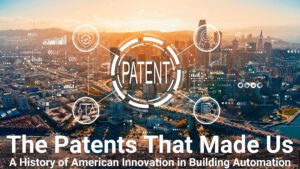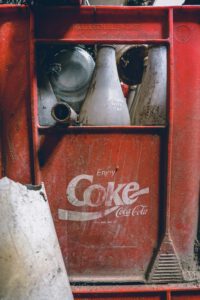
Today, we expect to have control of our environment at the touch of a button or swipe of a screen. Many of our electronic devices and systems are connected to the internet, which gives us an unprecedented level of control. When everyday devices—such as your thermostat, watch, or toaster oven—are connected to the internet, it is called the Internet of Things (IoT). These physical devices are embedded with sensors and software that allow them to connect and share data without human intervention.
With devices thus connected, temperature, humidity, air quality, energy consumption, and machine performance can be monitored, trends can be analyzed, and businesses can benefit from improved efficiency, data-driven decision-making, and cost savings.
Devices such as sensors and actuators make all this possible, if those devices have a connection to the internet. This begs the question, what was the first IoT device?
While this technology was never patented by its inventors, we can credit a vending machine and the need for caffeine as one of the first Internet of Things devices.
 David Nichols, a computer science graduate student at Carnegie Mellon University in the 1980s, officed a far distance from the campus soda machine. By the time he arrived at the machine, it would be fresh out of sodas or the ones that were there would be warm, having just been reloaded. So, Nichols enlisted some fellow students and engineers to help him create a system by which he could remotely check the contents of the soda machine and ensure that he received a cold Coke.
David Nichols, a computer science graduate student at Carnegie Mellon University in the 1980s, officed a far distance from the campus soda machine. By the time he arrived at the machine, it would be fresh out of sodas or the ones that were there would be warm, having just been reloaded. So, Nichols enlisted some fellow students and engineers to help him create a system by which he could remotely check the contents of the soda machine and ensure that he received a cold Coke.
The team installed a board to sense the status of the indicator lights on the soda machine; a red indicator light would blink upon purchase and the light would stay on if the machine was out. The board was connected to the university’s main computer and the university’s Wi-Fi network. The program could track how long the bottles had been in the machine, gauging when they were the perfect temperature.
This technology was later used to check the status on an M&M machine on campus and in subsequent years, to check the status of a coffee pot at the Cambridge campus. Later in the 1990s, the first true IoT device was created—a toaster that could be controlled remotely.
Some inventors are inspired by the dire needs of those around them and grand problems that need solutions. However, others use their inventiveness to solve the everyday problems that plague us all—such as the need to get a soda at just the right time.
Join us for Part 3 of our series “The Patents that Made Us” when we explore automated security and the quality and innovation that characterizes American business and invention.
For more information on KMC Controls products, please visit https://www.kmccontrols.com/, your one-stop turnkey solution for building control. We specialize in open, secure, and scalable building automations, teaming up with leading technology providers to create innovative products that help customers increase operating efficiency, optimize energy usage, maximize comfort, and improve safety. Let our Building Geniuses® take your facility to the next level.
References:
https://www.ibm.com/blog/little-known-story-first-iot-device/
https://www.ibm.com/topics/internet-of-things
https://www.coursera.org/articles/internet-of-things
https://www.smithsonianmag.com/innovation/kevin-ashton-describes-the-internet-of-things-180953749/
 Cart
Cart